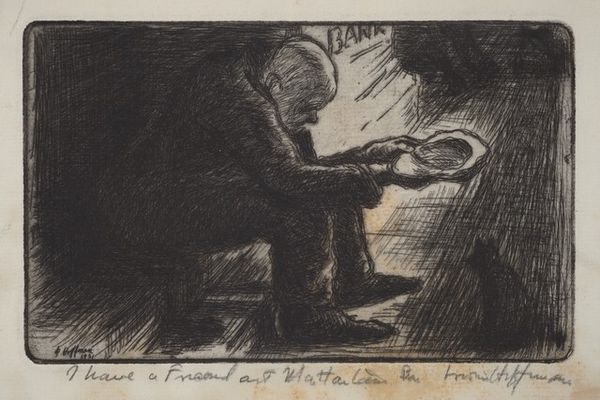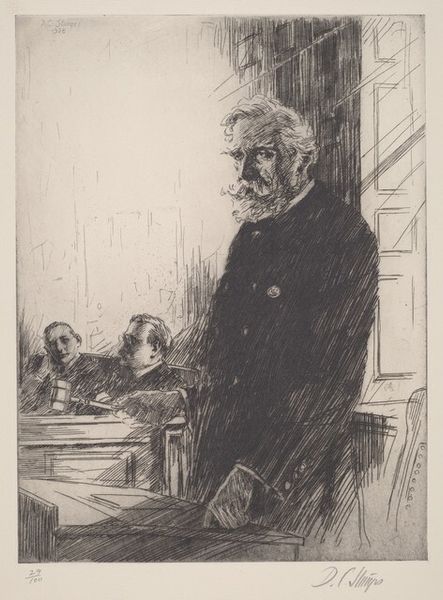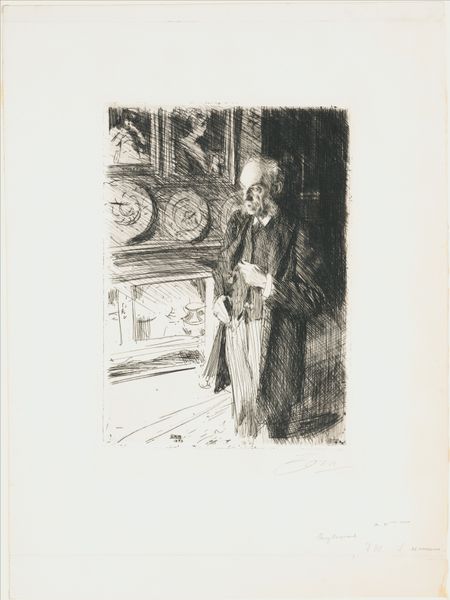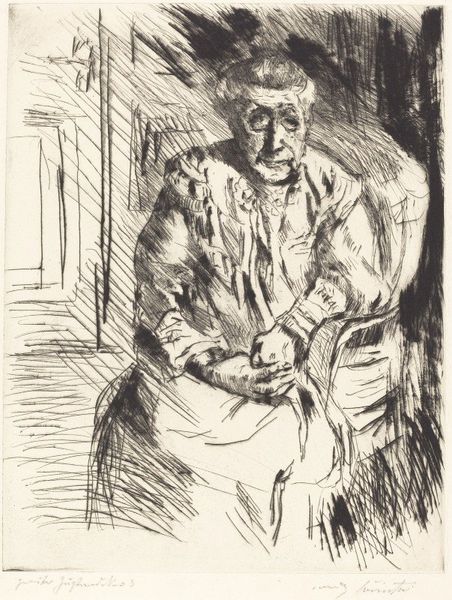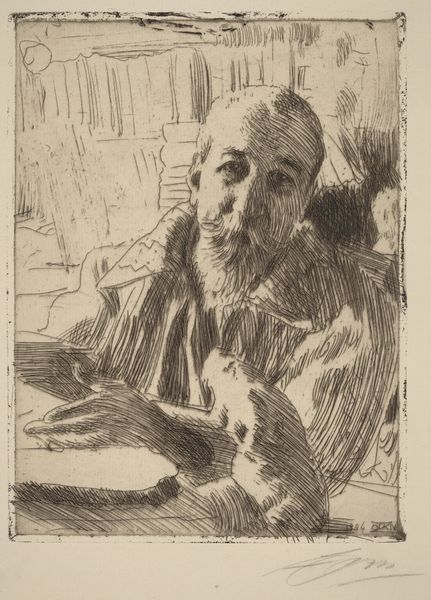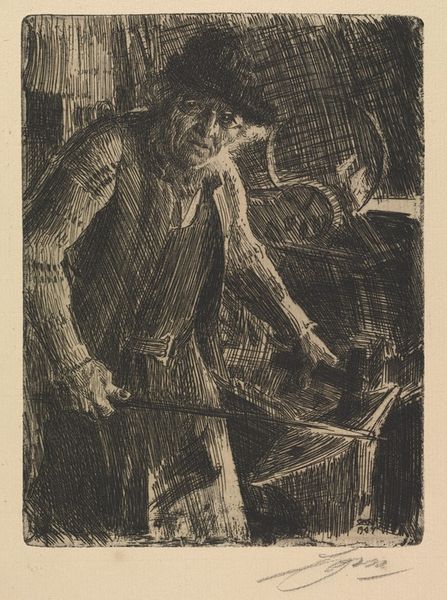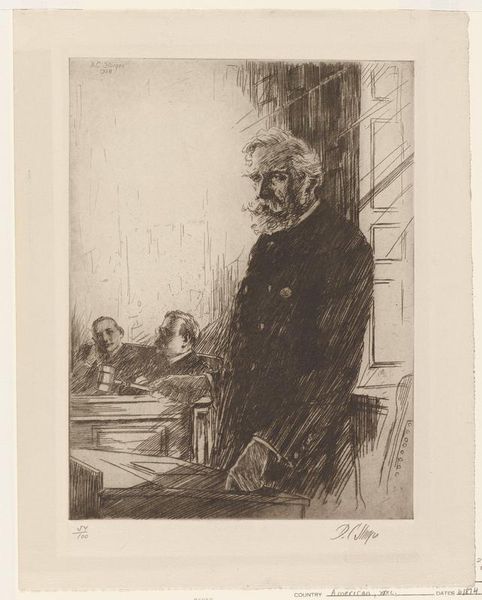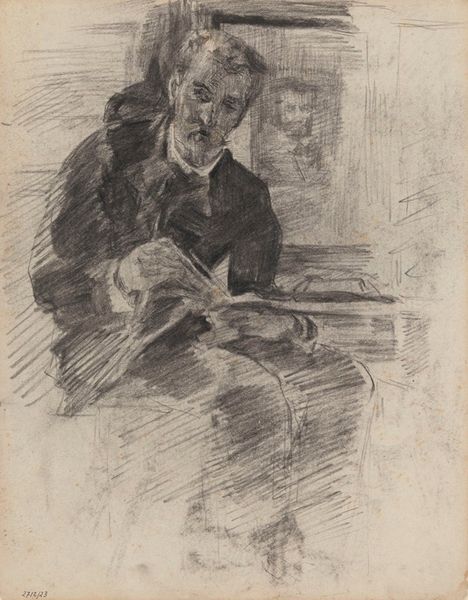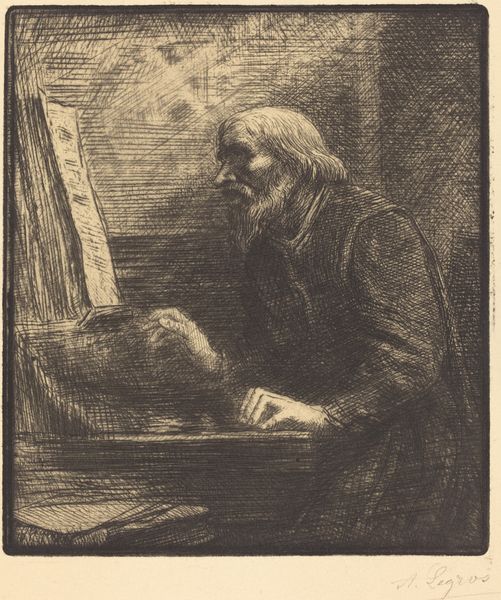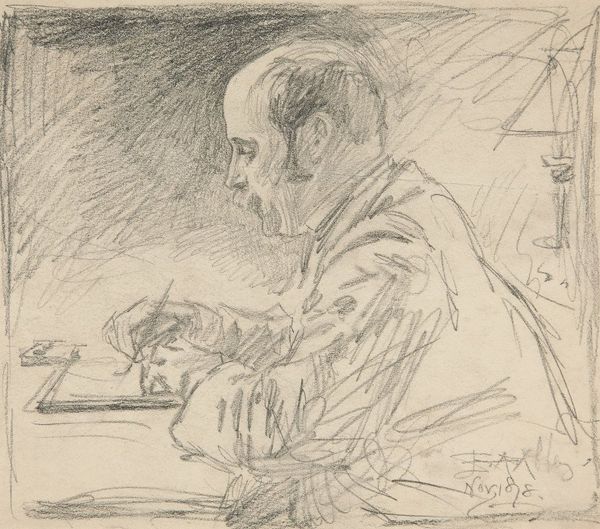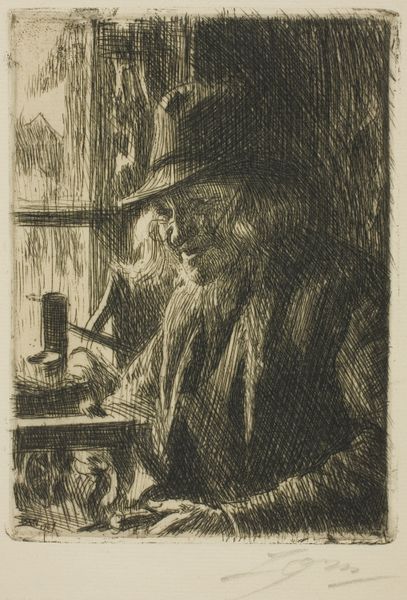
drawing, print, etching
#
portrait
#
drawing
# print
#
etching
#
portrait drawing
#
realism
Copyright: Public Domain: Artvee
Curator: Anders Zorn’s etching of Henry Marquand, created in 1893, is a study in light and shadow. Editor: It strikes me as somber; the subject seems almost engulfed by darkness. There's a vulnerability suggested by the skeletal rendering of Marquand's face that is affecting, although I don't know what this rendering conceals or reveals. Curator: Zorn masterfully employs etching to define form and texture. Notice the density of lines creating the rich blacks of his coat compared to the sparse, delicate rendering of his face. Semiotically, it represents him hiding in shadow, being reluctant. Editor: Absolutely. The strategic deployment of line becomes meaning in itself. What was Marquand's place in the Swedish art world, though? Did Zorn situate him within any circles or societies that we might understand now in relationship to this very personal image? Curator: Marquand was an American financier and philanthropist, deeply involved in the art world. It's fascinating to note how Zorn avoids idealizing Marquand, presenting him with almost brutal honesty. The interplay between light and shadow obscures so much as it reveals. We, as viewers, can project much of what is *not* said. Editor: Yes, in a way, Zorn is placing Marquand’s capitalist power in a European tradition of arts patronage. We are, of course, aware of how gendered, raced, and classed such philanthropic circles tend to be. How might this reading adjust our vision of the composition, knowing the social strata within which these men likely functioned? Curator: Intriguing. We see the strong contrast of textures and shading not just as technique, but reflecting broader socio-economic structures. It brings a vital awareness to the way Zorn depicts this patron of the arts, offering an understated commentary on the distribution of wealth and artistic privilege. Editor: I agree; it gives us a space for re-evaluation. The formal techniques aren't separate from their ideological implications; it is a union of medium, practice, and production. Thank you, this reframing has enriched my perception. Curator: Indeed, it’s through combining our observations that we begin to touch at truth, I feel. An understanding of the work as a material object can also be viewed as part of its rich cultural narrative.
Comments
No comments
Be the first to comment and join the conversation on the ultimate creative platform.



